
Norman Percevel Rockwell was an American painter and illustrator. His works have a broad popular appeal in the United States for their reflection of the country's culture. Rockwell is most famous for the cover illustrations of everyday life he created for The Saturday Evening Post magazine over nearly five decades. Among the best-known of Rockwell's works are the Willie Gillis series, Rosie the Riveter, The Problem We All Live With, Saying Grace, and the Four Freedoms series. He is also noted for his 64-year relationship with the Boy Scouts of America (BSA), during which he produced covers for their publication Boys' Life, calendars, and other illustrations. These works include popular images that reflect the Scout Oath and Scout Law such as The Scoutmaster, A Scout Is Reverent and A Guiding Hand, among many others.

The Scream is a composition created by Norwegian artist Edvard Munch in 1893. The Norwegian name of the piece is Skrik (Scream), and the German title under which it was first exhibited Der Schrei der Natur. The agonized face in the painting has become one of the most iconic images of art, seen as symbolizing the anxiety of the human condition. Munch's work, including The Scream, had a formative influence on the Expressionist movement.

Sotheby's is a British-founded multinational corporation with headquarters in New York City. It is one of the world's largest brokers of fine and decorative art, jewellery, and collectibles. It has 80 locations in 40 countries, and maintains a significant presence in the UK.
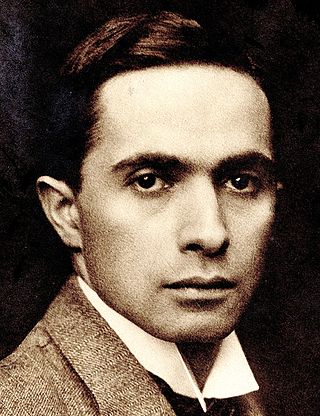
Joseph Christian Leyendecker was one of the most prominent and financially successful freelance commercial artists in the U.S. He was active between 1895 and 1951 producing drawings and paintings for hundreds of posters, books, advertisements, and magazine covers and stories. He is best known for his 80 covers for Collier's Weekly, 322 covers for The Saturday Evening Post, and advertising illustrations for B. Kuppenheimer men's clothing and Arrow brand shirts and detachable collars. He was one of the few known gay artists working in the early-twentieth century U.S.
The Berkshire Museum is a museum of art, natural history, and ancient civilization that is located in Pittsfield in Berkshire County, Massachusetts.

Crystal Bridges Museum of American Art is a museum of American art in Bentonville, Arkansas. The museum, founded by Alice Walton and designed by Moshe Safdie, officially opened on 11 November 2011. It offers free public admission.
Donald Trachte was an American cartoonist known for his work on the comic strip Henry.

Willie Gillis, Jr. is a fictional character created by Norman Rockwell for a series of World War II paintings that appeared on the covers of 11 issues of The Saturday Evening Post between 1941 and 1946. Gillis was an everyman with the rank of private whose career was tracked on the cover of the Post from induction through discharge without being depicted in battle. He and his girlfriend were modeled by two of Rockwell's acquaintances.
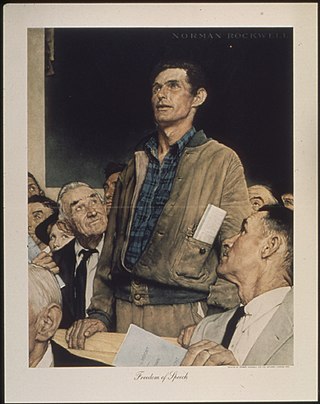
The Four Freedoms is a series of four oil paintings made in 1943 by the American artist Norman Rockwell. The paintings—Freedom of Speech, Freedom of Worship, Freedom from Want, and Freedom from Fear—are each approximately 45.75 by 35.5 inches, and are now in the Norman Rockwell Museum in Stockbridge, Massachusetts. The four freedoms refer to President Franklin D. Roosevelt's January 1941 Four Freedoms State of the Union address, in which he identified essential human rights that should be universally protected. The theme was incorporated into the Atlantic Charter, and became part of the Charter of the United Nations. The paintings were reproduced in The Saturday Evening Post over four consecutive weeks in 1943, alongside essays by prominent thinkers of the day. They became the highlight of a touring exhibition sponsored by The Post and the U.S. Department of the Treasury. The exhibition and accompanying sales drives of war bonds raised over $132 million.
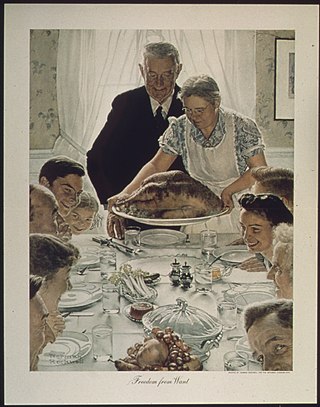
Freedom from Want, also known as The Thanksgiving Picture or I'll Be Home for Christmas, is the third of the Four Freedoms series of four oil paintings by American artist Norman Rockwell. The works were inspired by United States President Franklin D. Roosevelt's 1941 State of the Union Address, known as Four Freedoms.

The Love Song is an oil painting by American artist Norman Rockwell, located in the Indianapolis Museum of Art, which is in Indianapolis, Indiana, United States. It originally appeared in the Ladies Home Journal in December 1926. It depicts two elderly musicians, on flute and clarinet, playing a duet while a young girl takes a break from sweeping to listen. The painting's title appears on the sheet music from which the musicians play.

Saying Grace is a 1951 painting by American illustrator Norman Rockwell, painted for the cover of The Saturday Evening Post's November 24, 1951, Thanksgiving issue.
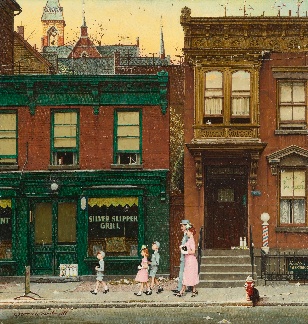
Walking to Church is a 1952 painting by the American painter Norman Rockwell, painted for the cover of The Saturday Evening Post's April 4, 1953, issue.

The Rookie or The Rookie is a 1957 painting by American artist Norman Rockwell, painted for the March 2, 1957, cover of The Saturday Evening Post magazine.
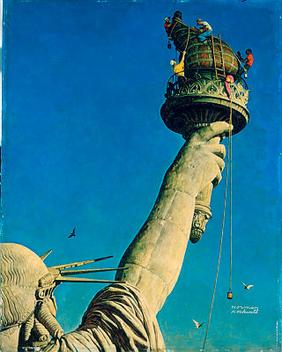
Working on the Statue of Liberty, also known as Statue of Liberty, is a 1946 oil painting by American illustrator Norman Rockwell, showing workmen cleaning the torch held aloft by the Statue of Liberty in New York Harbor.
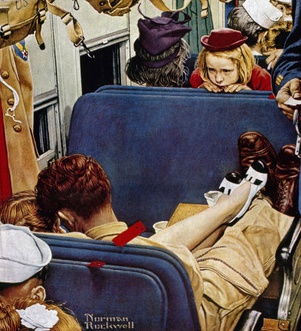
Little Girl Observing Lovers on a Train, also known as Travel Experience or Voyeur, is a painting by American illustrator Norman Rockwell. It was originally created for the cover of The Saturday Evening Post on 12 August 1944.

Walter Hunt Everett (1880–1946) was an American artist, associated with the Brandywine School of art and the Golden Age of Illustration. Everett was a cover-artist and illustrator for books and national magazines such as Pictorial Review, TheSaturday Evening Post, Colliers, Ladies’ Home Journal, and Scribner’s.
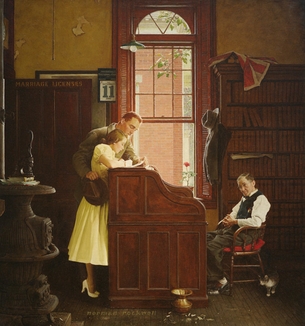
Marriage License is an oil painting by American illustrator Norman Rockwell created for the cover of the June 11, 1955, edition of The Saturday Evening Post. It depicts a young man and woman filling out a marriage license application at a government building in front of a bored-looking clerk. The man is dressed in a tan suit and has his arm around his partner, who is wearing a yellow dress and standing on tiptoe to sign her name. Although the room and its furnishings are dark, the couple are illuminated by the window beside them. The contrast between the couple and the clerk highlights two reoccurring themes in Rockwell's works: young love and ordinary life.
















